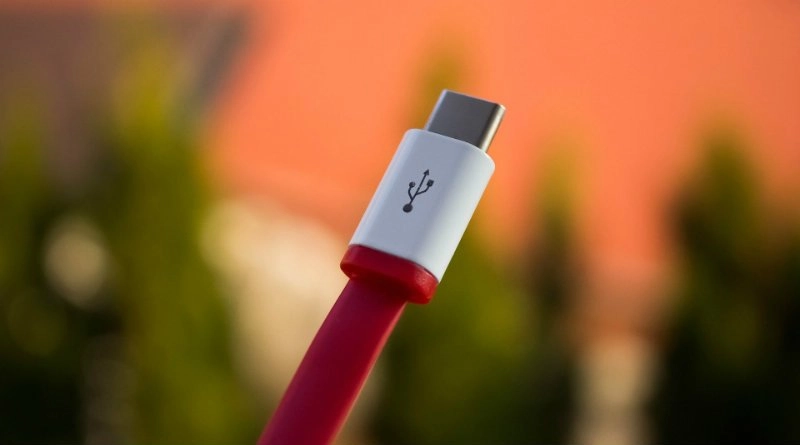After the approval by the European Parliament of the regulations that oblige that all electronic devices sold in the European Union use the USB-C port for rechargingMany eyes have turned to Cupertino, home to Apple, whose flagship device, the iPhone, stubbornly continues to trust its physical connection to its proprietary Lightning port.
The regulation approved by the European Parliament on the USB-C port contains a grace period for mobile manufacturers of two years
Apple has already introduced the USB-C port in other families of products such as MacBook laptops or iPad tablets, but the iPhone continues to resist, as evidenced by the latest generation presented a few weeks ago, with an iPhone 14 that continues to sport the Lightning port , a connector that is already a decade old but whose future seems to be meager.
The reasons for the European Union to establish the USB-C port as the only one for recharging electronic devices has to do with the electronic waste reduction, when it is calculated that 11,000 tons of electronic devices and chargers are deposited in the garbage every year. The single charger would reduce these figures by allowing it to be used by the different devices in use, in addition to also being used for future devices that replace the current ones.
As this regulation has been approved by the European Parliament, it is guaranteed that there are no obstacles for it to enter into force and be mandatory, although the procedure still requires the signature of the Council and that it be published in the Official Gazette of the European Union. finally entering into force 20 days after this last step.
But even then, this does not mean that Apple and other manufacturers should start selling all their devices with this USB-C port the next day. This is so because the regulations approved by the European Parliament include a grace period of two years to allow the technological transition of manufacturers and the adaptation of their devices to the new regulations.
In this way it will be at the end of the year 2024 when all manufacturers wishing to sell electronic devices in the European Union will be required to include only the USB-C port, a change that will have the greatest impact on Apple’s iPhone as it is one of the best-selling devices in all the world. By the way, the regulations include the obligation that the USB-C port be accessible at all times, so the resource of adding an adapter together with the mobile would not work Lightning to USB-C.
If you ignore the possible changes in the nomenclature of the iPhone and it is assumed that the device presented in this year 2022 is the iPhone 14, in the year 2023 the iPhone 15 should be presented, in the year 2024 the iPhone 16 and in the year 2025 the iPhone 17.
Taking into account that in all probability Apple has already begun the development of the iPhone 15 that will be presented in 2023, it is more than possible that next year the Lightning connector will still be maintained on the Apple smartphone. However, the situation could be extended until 2025 when the iPhone 17 is presented in 2024 shortly before the end of the aforementioned grace period of European regulations, so it could still be sold with a Lightning connector.
Thus, and if Apple extended the situation until the arrival of the iPhone 17, in 2025, it would be the first to finally incorporate the USB-C port. And it is that the regulations will not be applicable to devices that have been presented prior to the date of application of the standard, therefore there would still be a little more than two years left for that moment.
On the other hand, renowned analysts such as Ming-Chi Kuo came to venture that the newly presented iPhone 14 would already incorporate the USB-C portwhich has not finally happened, but perhaps it could happen as early as 2023 with the presentation of the iPhone 15. Another analyst like Mark Gurman, more conservative in his forecasts in this regard, points to 2023 as the earliest date on which Apple would present an iPhone with USB-C, so this would offer a fork in which the 2022 iPhone has already been ruled out, with a possible first date in the fall of 2023 and, at the latest, with the 2025 iPhone as the first with USB-C port.
On the other hand, and without leaving Apple, this regulation would also force the USB-C port to be added to other brand devices that still use the Lightning port, such as the Magic Keyboard or the Magic Mouse. In the case of laptops, where Apple already complies with the regulations since all MacBooks use USB-C, the legislation provides for an even longer grace period, which runs until 2026.
As for smaller devices, such as smart watches or activity monitoring bracelets, the regulations provide an exception in attention to the small size of the devices, which would make it impossible to include the USB-C port, allowing manufacturers to continue using their proprietary connectors.
Finally, two alternatives that would be left to Apple, one of them quite unlikely, the other feasible:
-Apple could decide to include a USB-C port only for iPhones destined for sale in the European Union.
-Apple could completely eliminate the physical connector of the iPhone.
The first option, while possible, seems unlikely (the European market accounts for a quarter of Apple’s sales), but the first would go in the direction Apple seems to have charted when it removed the headphone jack and added wireless charging.
Also, when the Lightning port was introduced in 2012 Phil Schiller (Apple’s Worldwide Marketing Director) referred to it as “a connector for a decade.” And that decade has already passed, so the transition to a port like USB-C, de facto universalized and with greater data transmission and recharging capacities than Lightnint, seems logical.














